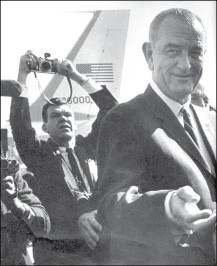UPDATE: Convicted serial killer George Howard Putt died in prison today. Here’s a 2006 story by Michael Finger that chronicles Memphis’ “summer of fear.”

George Howard Putt
Thirty-seven years ago this week, Memphis became a city in fear. In the late summer of 1969, a cold-blooded killer stalked the streets, and over a period of 28 days, police made one grisly discovery after another. In the end, the slayer was captured after a wild chase by a posse of ordinary citizens. After his arrest, George Howard Putt told reporters, “I’d do it all again.”
The murder spree began on the afternoon of August 14, when the son of Roy and Bernalyn Dumas discovered the bodies of his parents in their apartment on South Cooper. Both had been strangled; the 46-year-old woman had been sexually mutilated. The 58-year-old husband had been strangled with a stocking tied “with ferocious tightness” around his throat. Police were baffled how someone could walk into a crowded apartment complex in mid-afternoon, commit such a brutal crime, ransack the couple’s apartment, then walk away — without any of the neighbors hearing or seeing a thing.
The mystery killer struck again on August 25th, when the body of 80-year-old Leila Jackson was discovered in her home near the Medical Center. Police determined that she, too, had been stabbed multiple times and then sexually mutilated. Detectives realized they had a serial killer on their hands, one described by police as “a cunning sex killer.”
The next victim was 21-year-old Glenda Sue Harden, abducted August 30th as she hopped in her car after leaving work in the Falls Building downtown. Her body was discovered the next day at the end of a dirt road in Riverside Park, stabbed repeatedly like the other victims. For some reason, her killer had driven her car back to the parking lot on the cobblestones. Even so, as in the other murders, he — if it was a he — left no clues, and had been seen by nobody.
The killings finally came to an end on the afternoon of September 11. The last victim was Christine Pickens, a 59-year-old widow stabbed more than 20 times as she entered her apartment on North Bellevue. Pickens’ desperate cries for help were heard by her neighbors, who rushed out of their apartments and began to chase a young man — his arms drenched in blood, and still carrying a butcher knife — down Madison. The killer hopped a fence and tried to escape by running down the expressway, which was then under construction, but he was eventually stopped by a pair of police officers. Noting the red stains on his hands, they at first thought he was a painter, but quickly realized his arms and clothes were covered with blood.
George Howard Putt was finally caught. The mystery killer who seemed to have superhuman abilities to evade capture turned out to be rather ordinary. Born in Louisiana in 1946, he was raised in foster homes and orphanages throughout the South. A violent streak landed him more than once in juvenile detention facilities. When he grew older, he married a woman he met in Mississippi, and in Memphis got a job pumping gas, where his coworkers described him as “a bit of daydreamer.” He confessed to the crimes and told police that he killed his victims, who were selected at random, just because he needed money (and always denied that he sexually abused any of them).
After he retracted his confessions, Putt was put on trial for the murder of his last victim, Christine Pickens. He was quickly found guilty and sentenced to die. His execution was overturned, however, so his sentence was changed to life in prison. That meant he would eventually be eligible for parole, and the authorities were determined that he would spend the rest of his life behind bars, so he was also put on trial for the double murder of Roy and Bernalyn Dumas. Found guilty of those crimes, too, he was sentenced to 199 years for each murder. The judge ordered the sentences to run consecutively, and the 497-year was the longest ever handed down in Shelby County.
Today, the most vicious killer in the history of Shelby County is serving his sentence at a medium-security prison outside of Nashville. Last year, he was actually up for parole, which was denied. There may be other parole hearings in the future, but it’s unlikely Putt will be released soon. He still has about 460 years to go.
— Michael Finger




 Bob Williams / Memphis Heritage
Bob Williams / Memphis Heritage